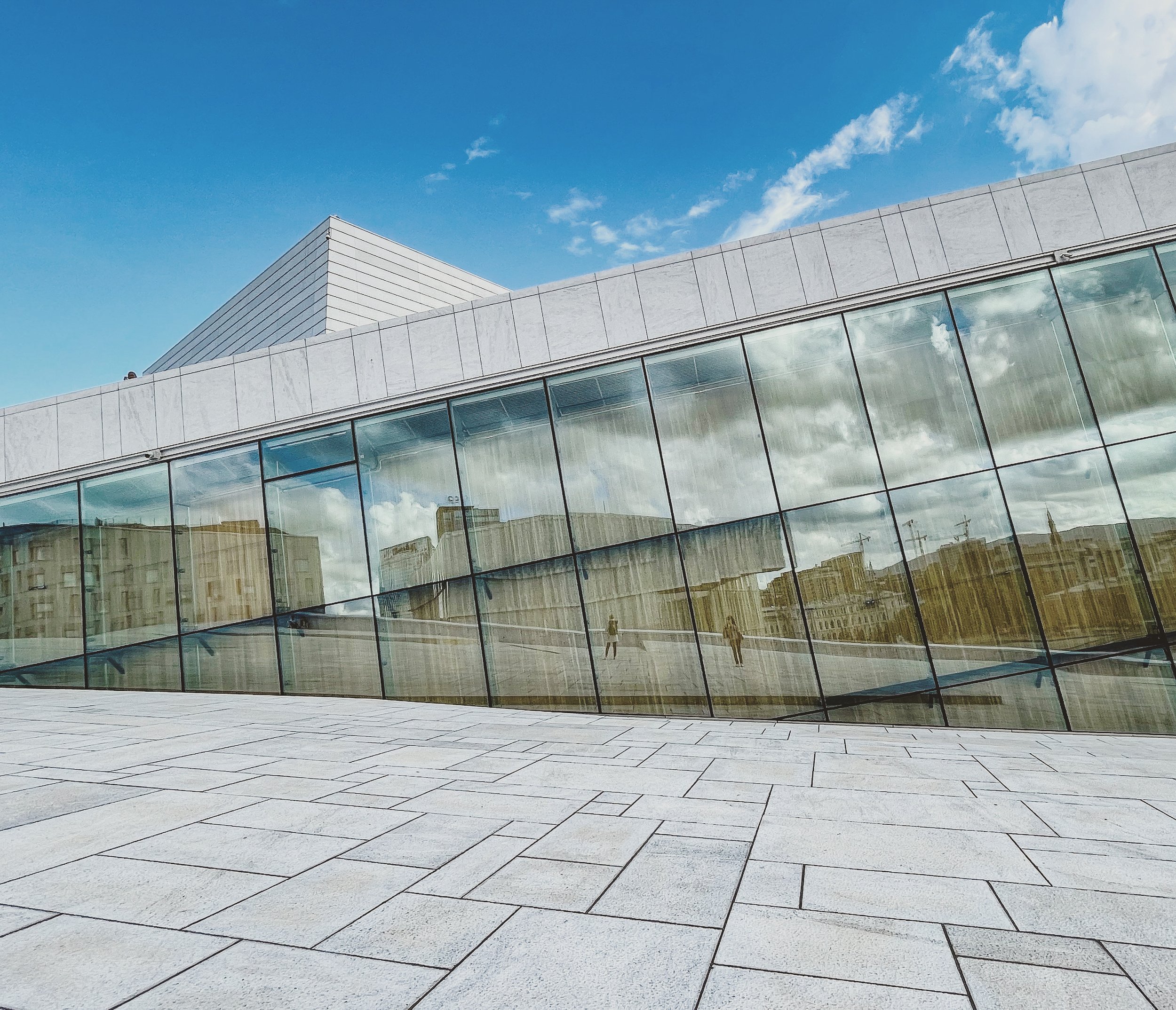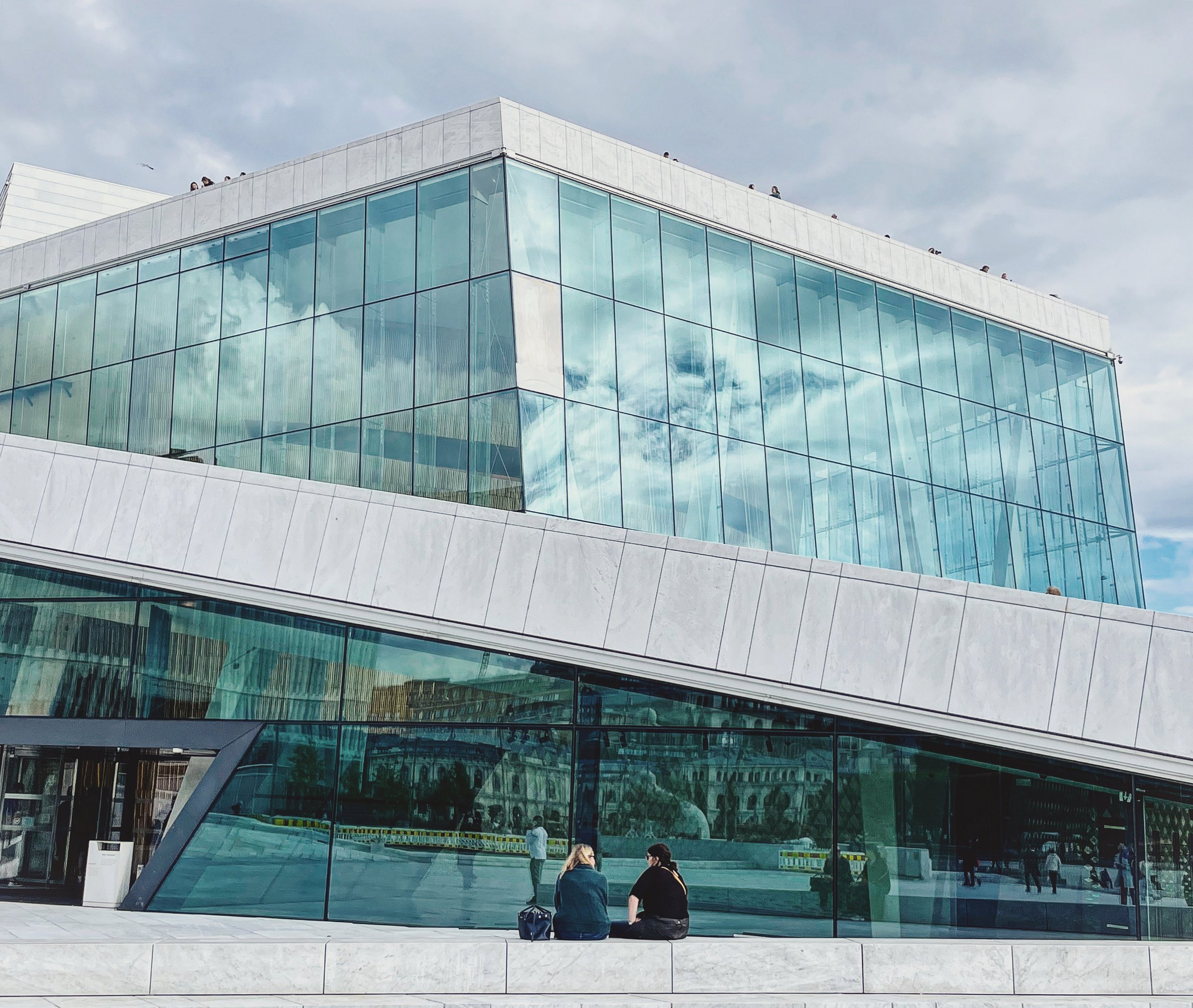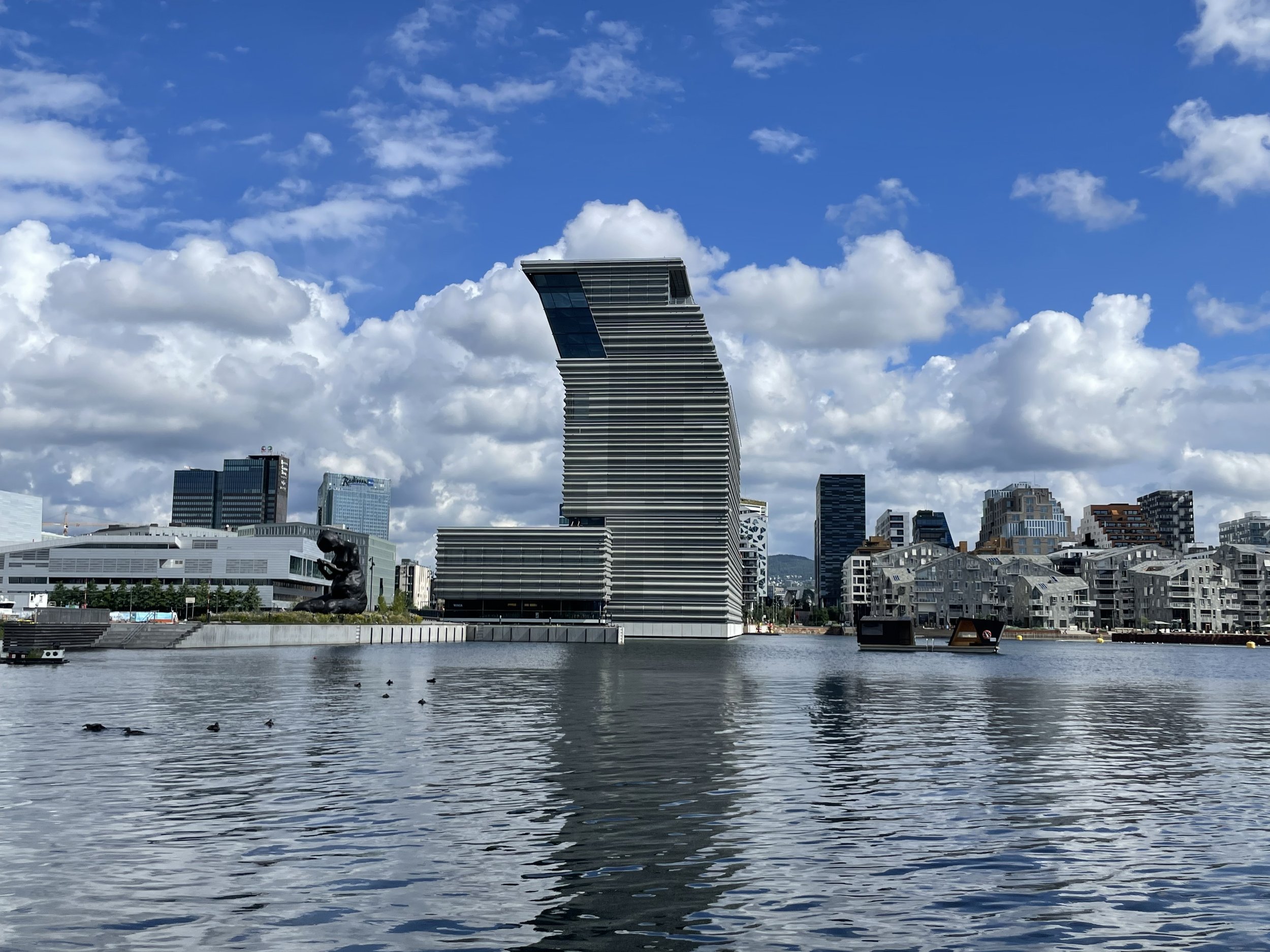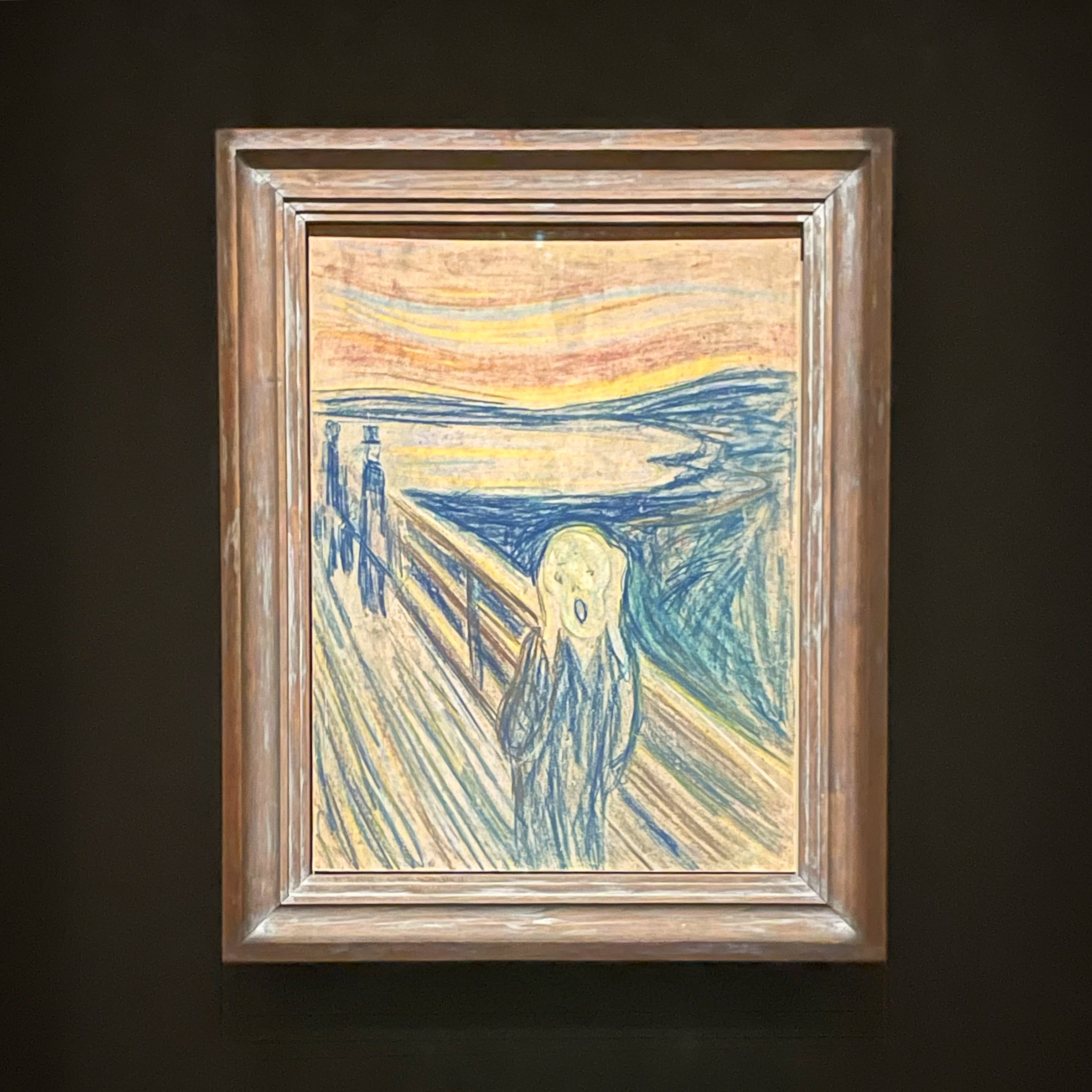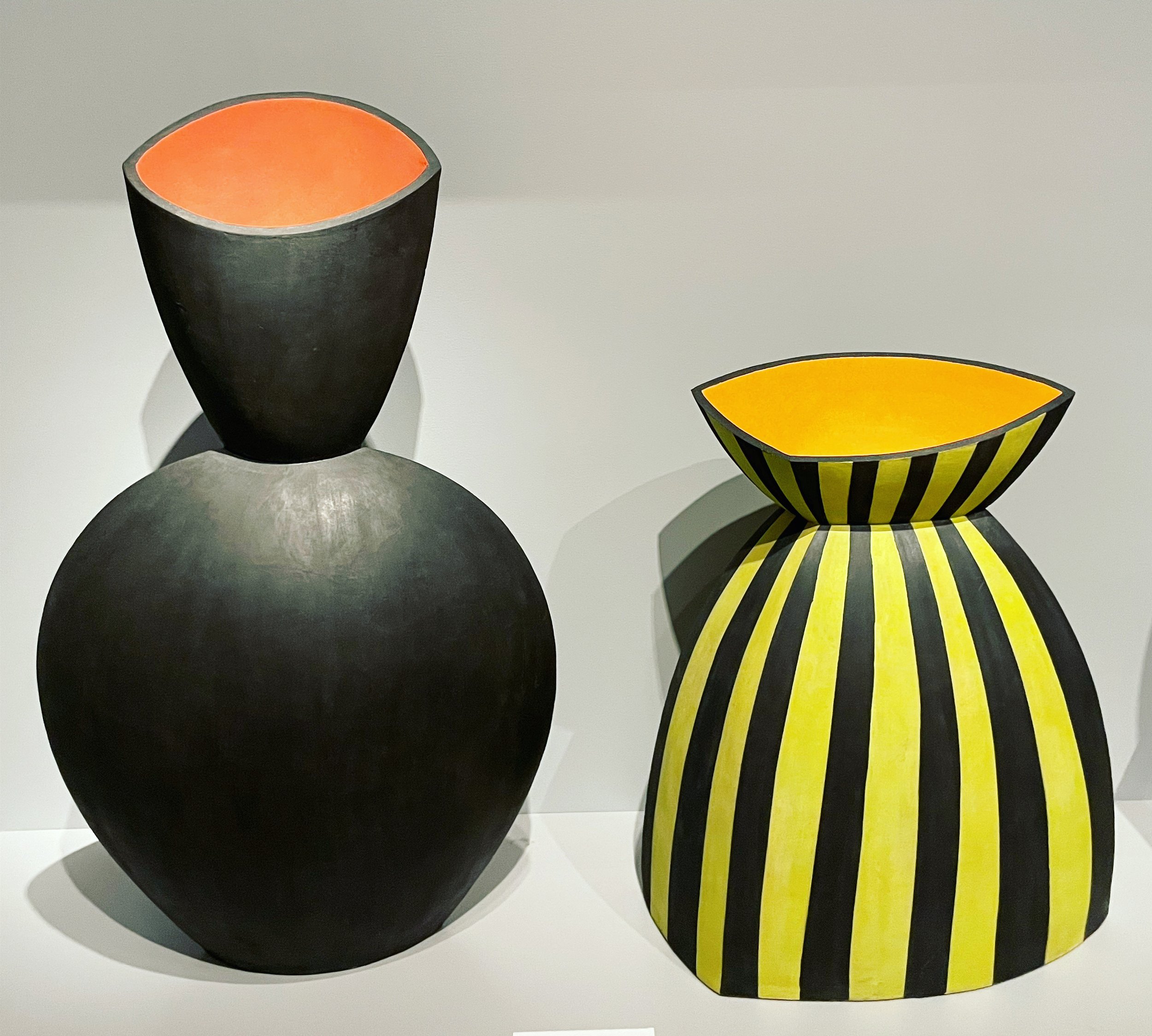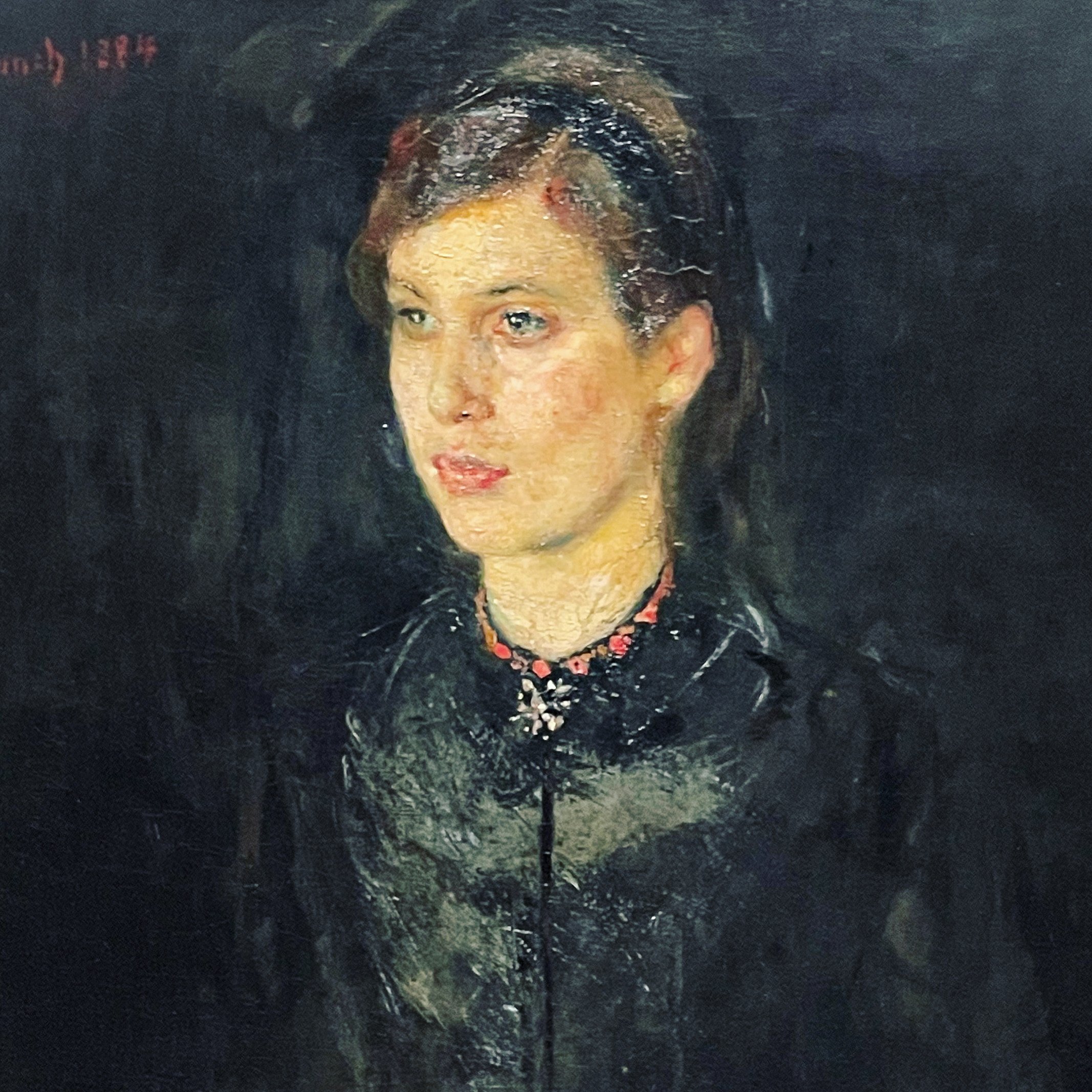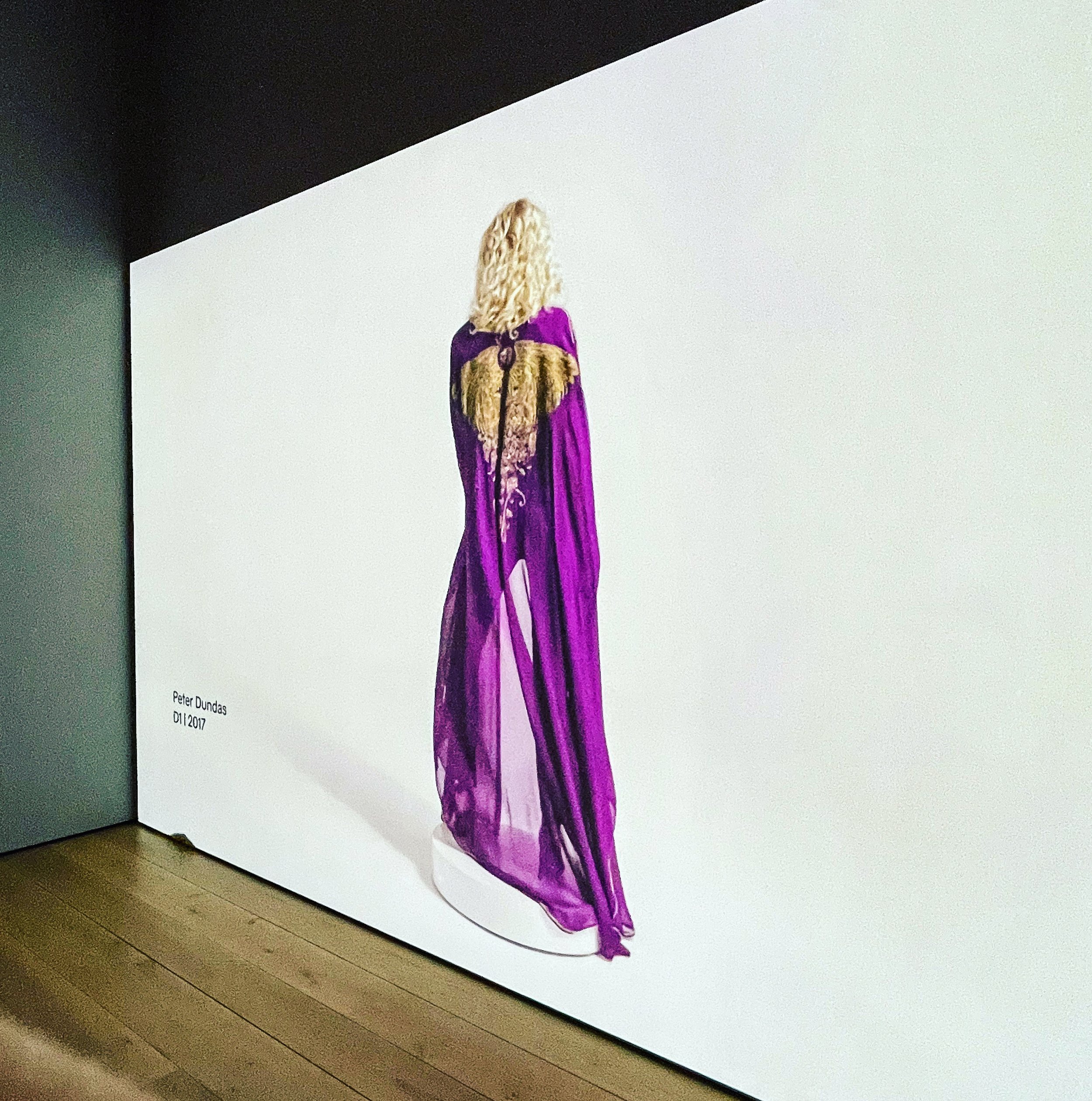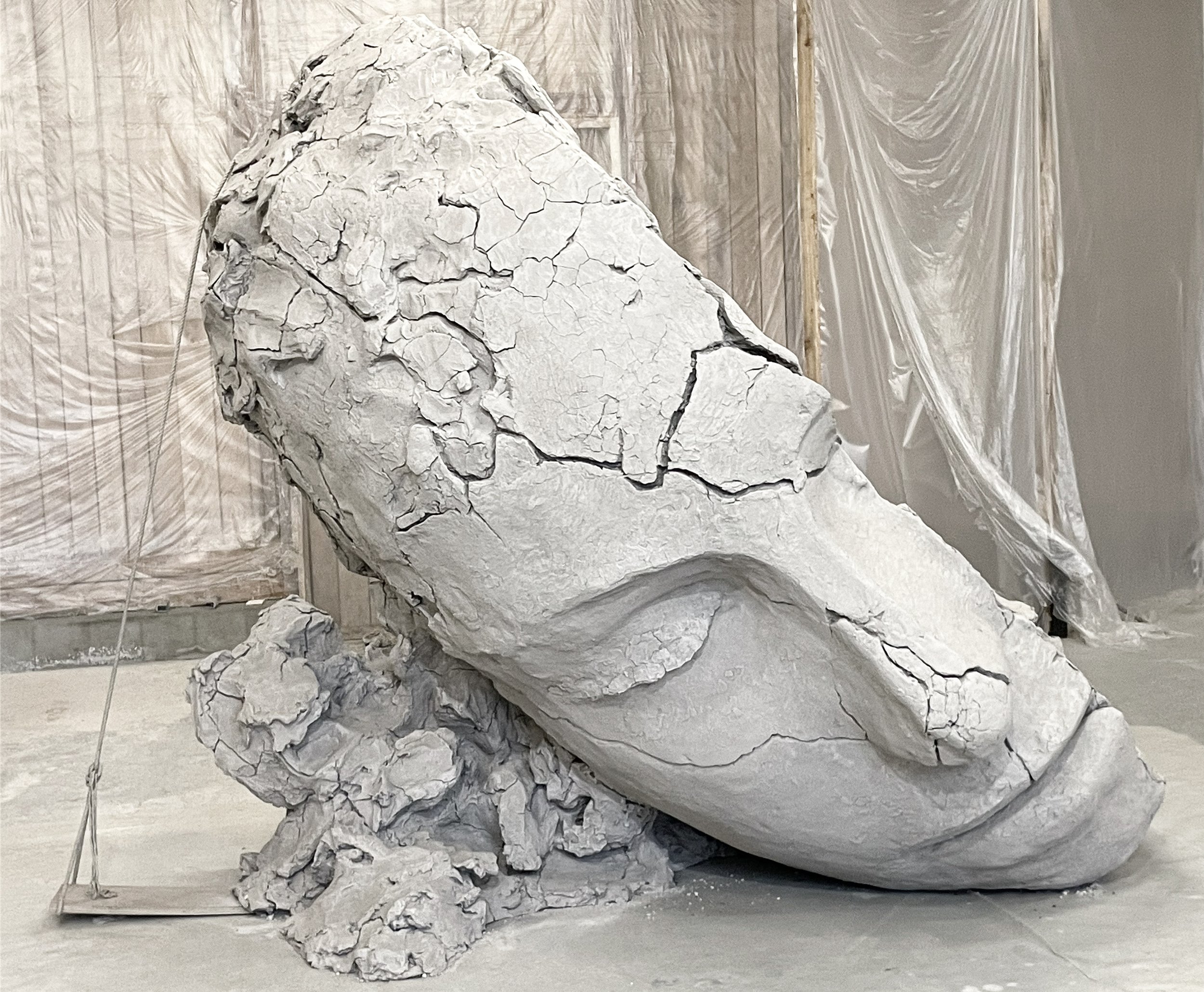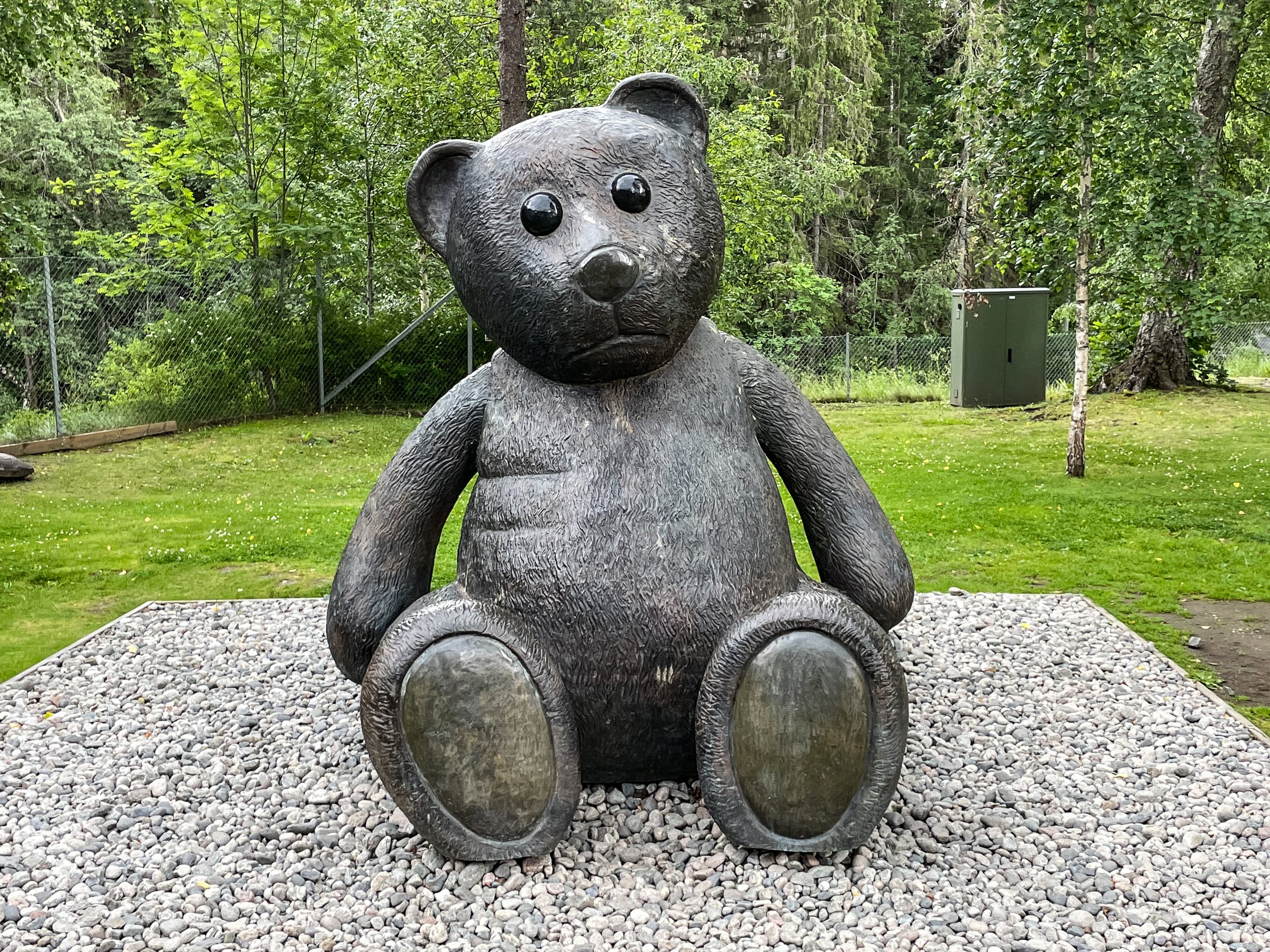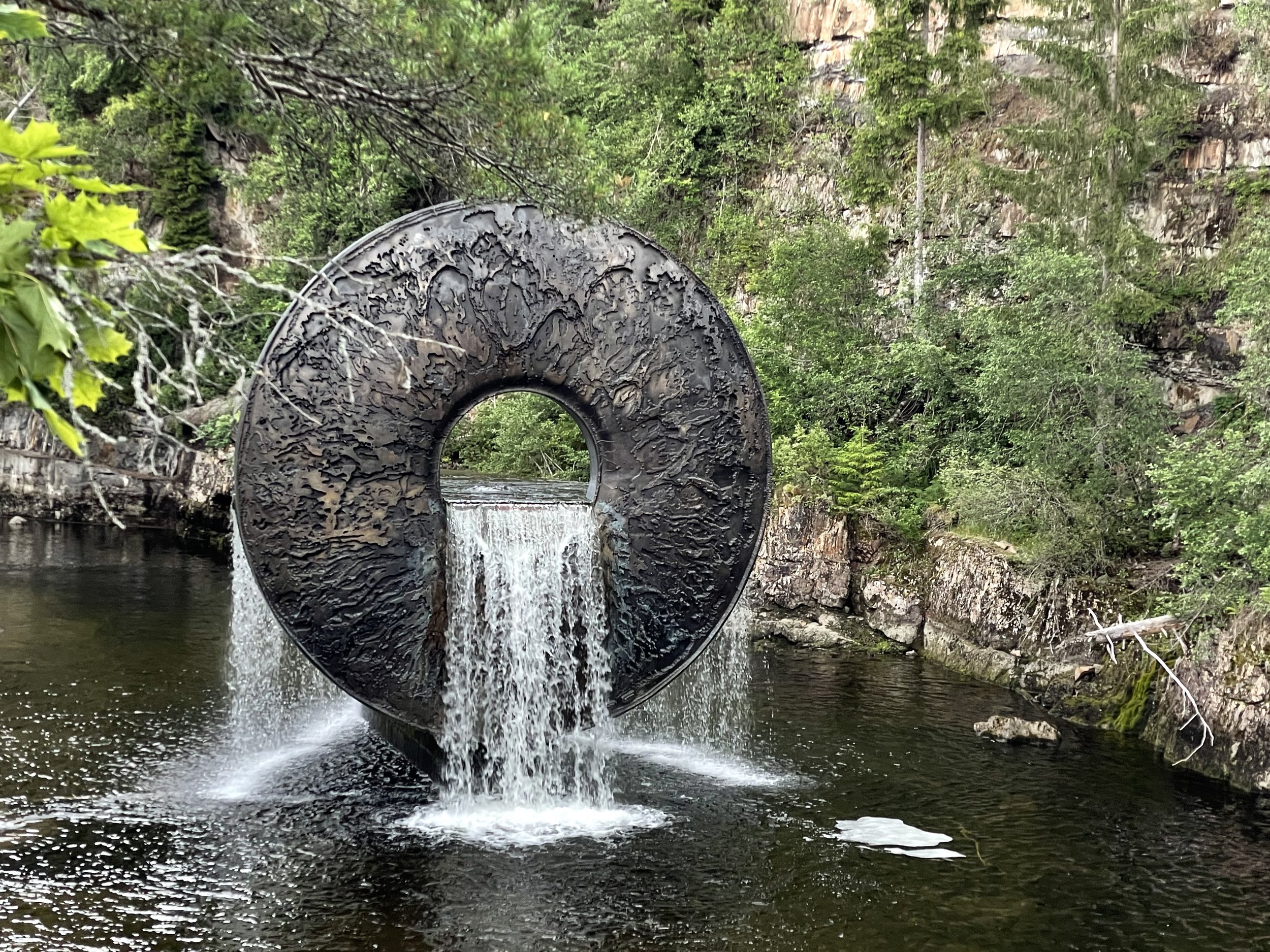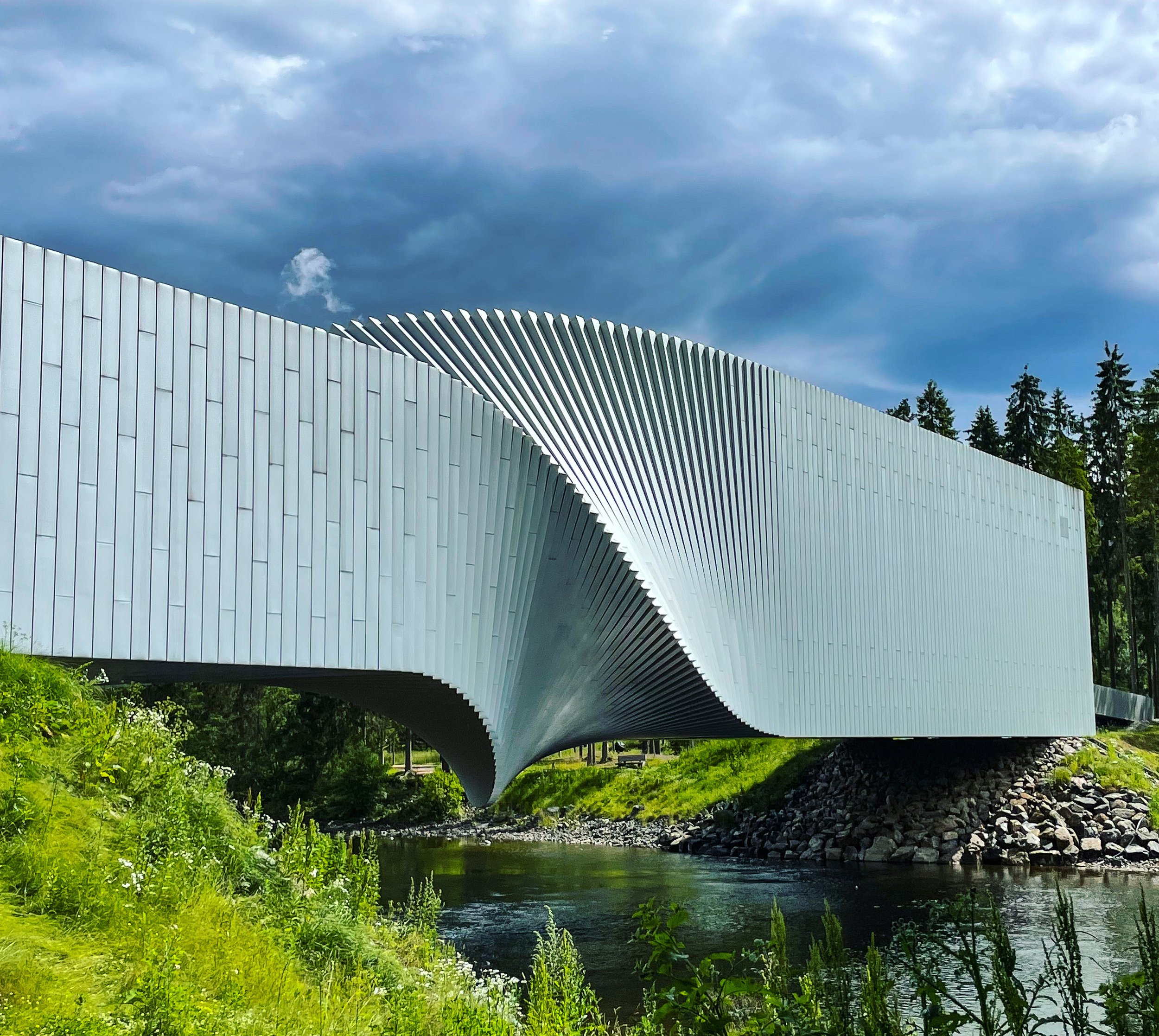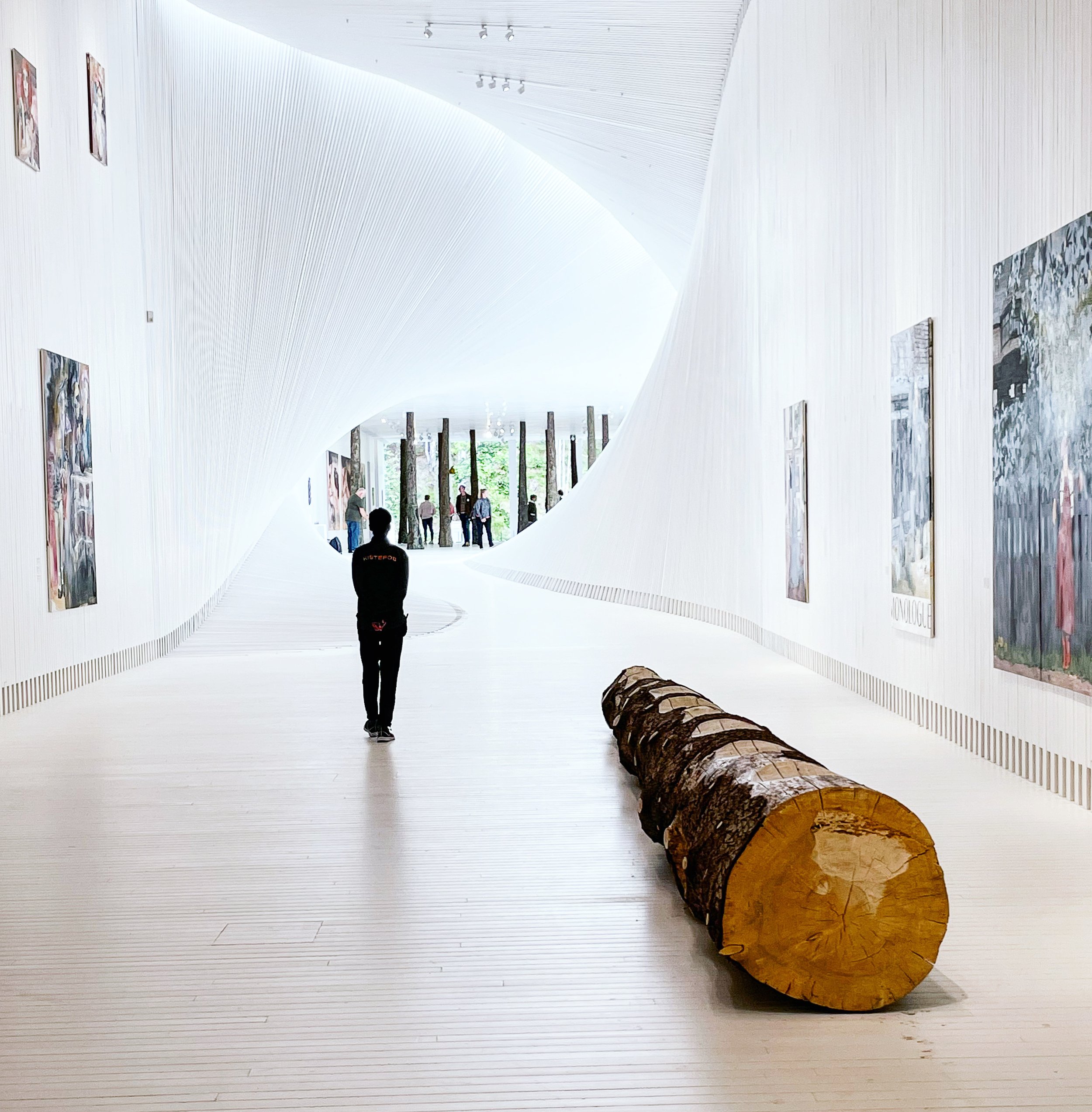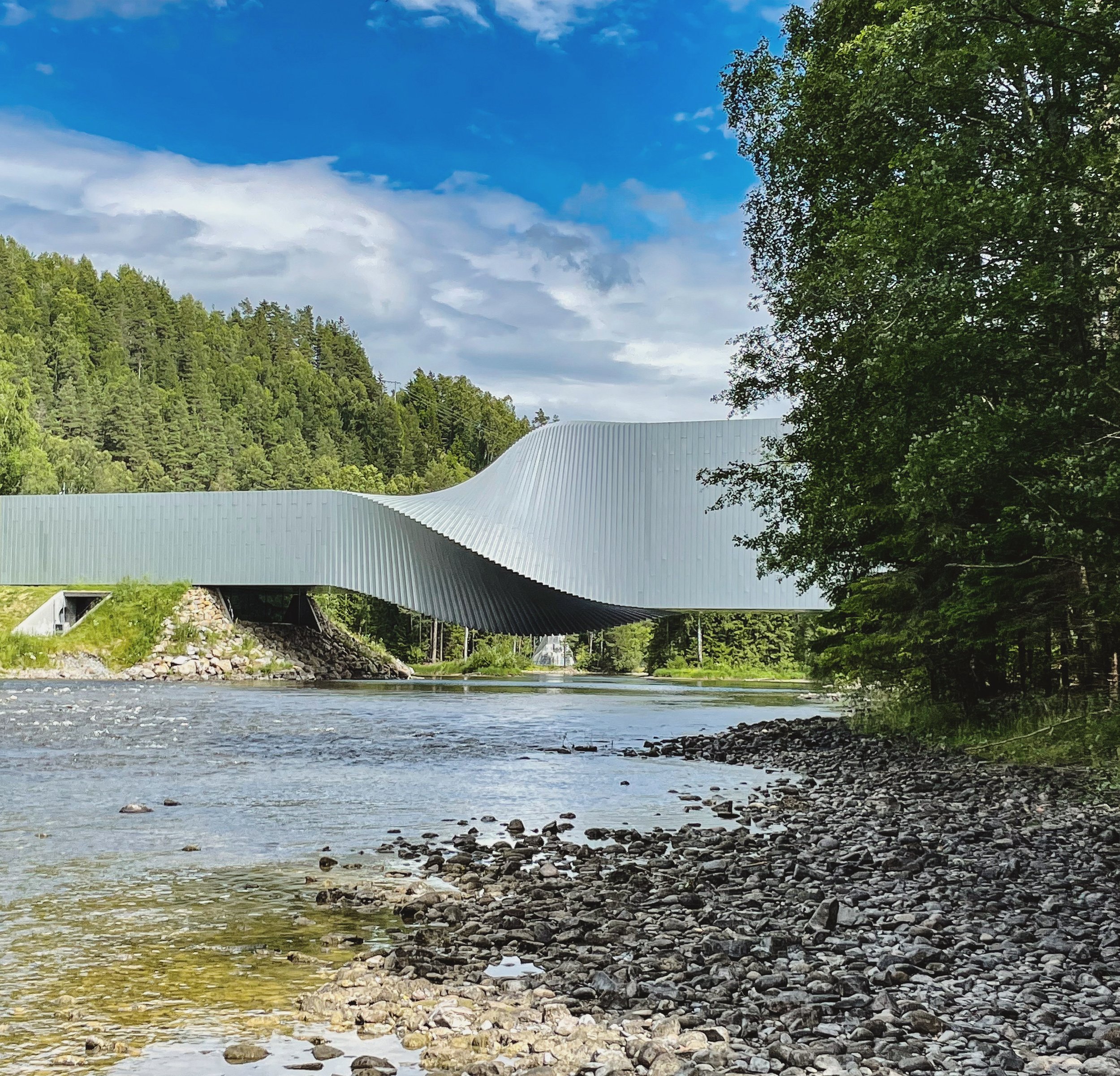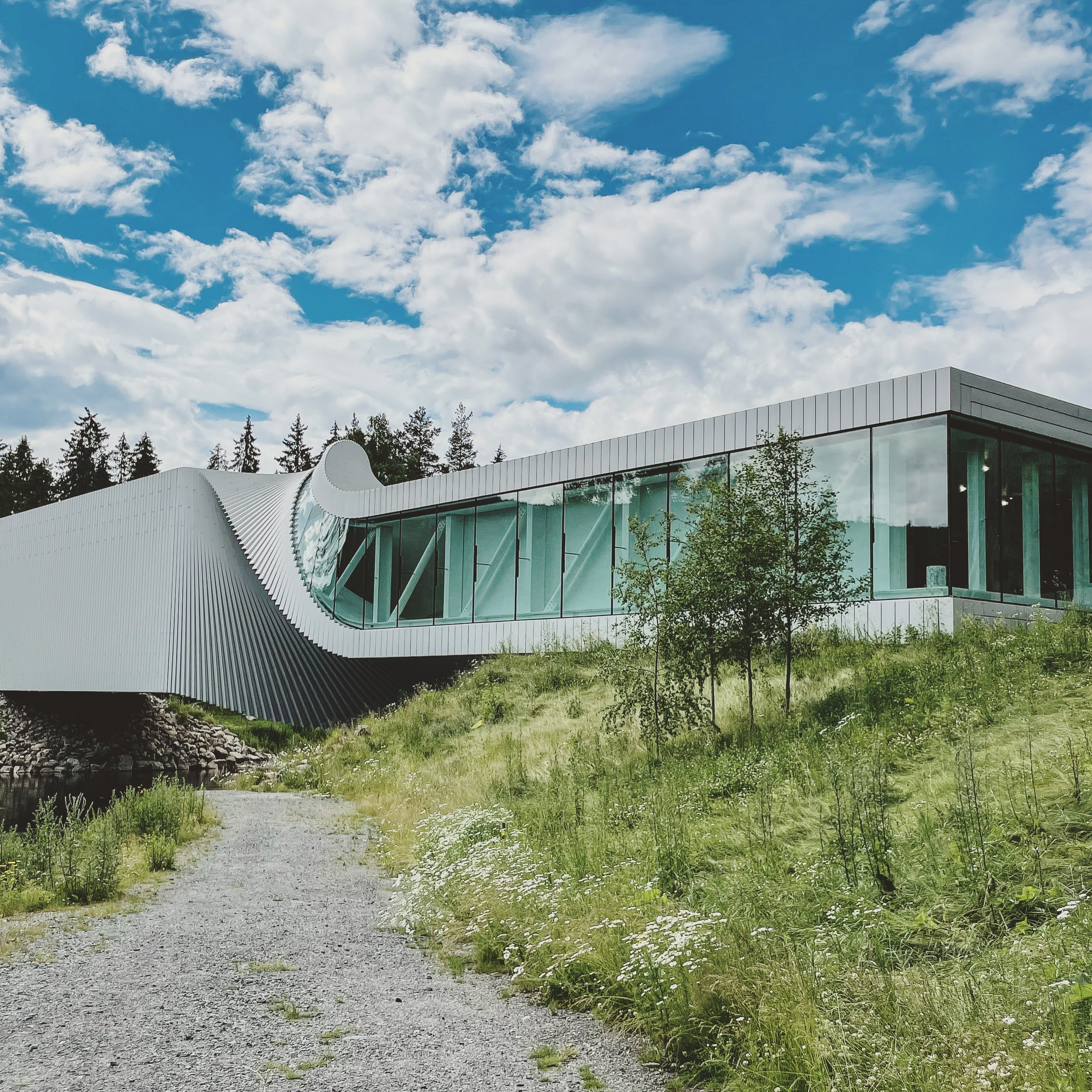NOTEWORTHY NORWEGIAN ART MUSEUMS
Norway. For most, the word conjures up images of long summer nights and enchanting fjords. Yes, Norway is all of that. And nature lovers should definitely put it on their must-see list. But, perhaps a bit more unexpectedly, this Scandinavian country can offer just as much to art lovers from around the world. Let’s explore, shall we?
OSLO: WHERE CONTEMPORARY ART AND ARCHITECTURE MEET
The Norwegian capital is having a moment. Stroll along its waterfront and you will find a spectacular modern opera building, an oversized Munch museum dedicated to one of the country’s best known artists, and, a few minutes further away, the spectacular new addition to the Nasjonalmuseet and the small but mighty Astrup Fearnley museum. All different. All worth a visit.
Let’s start in the Bjørvika neighborhood. This is the home of the Norwegian Opera. Though technically, this is not an art museum, the architecture lover in me could not peel my eyes off the beautiful building designed by Snøhetta. Part of the city’s reclamation project, the Opera is built on pylons in the Oslo fjord and extends Oslo's harbor, giving more of the city's waterfront space back to the public. Large windows face the Oslo fjord and allow visitors to peek into studios and interiors. Two sloping ramps on either side invite you to make your way to the building’s roof which is accessible year-round and offers spectacular views. I loved it and I believe you will, too.
Just a few steps away, the new Munch museum towers over the fjord. A truly monumental structure erected to celebrate Norway’s favorite painter, the museum’s thirteen floors leave plenty of room to showcase artifacts from the artist’s own home and walk you through his print making techniques (you can try your hand at it, too). The museum introduces you to Munch’s Norwegian artist contemporaries through the collection of Rolf Stenersen. If you are so inclined, step into the dark moody experiential fusion of music by the black metal band Satyricon and Munch’s art. And then, of course, the main course: Munch’s monumental works and hundreds of his paintings gracing the walls of several floors. Once you see a smaller darker room with heavy guard presence, you know you’ve reached the main attraction: it’s The Scream room. The museum has three, but only one will be on display at any given time. The other two are hiding behind sliding black doors that protect them until it’s their turn to charm visitors. The museum rotates through the paintings on a schedule.
Ready to move to another part of Oslo? Take a quick walk (or hop on one of the trams that are constantly criss-crossing the city center) and get yourself to the Vestbanehallen. This is where you will find the latest addition to Oslo’s rich gallery scene: Nasjonalmuseet for kunst - or the Norwegian Museum for Art and Design. The new building is wonderful in its pulled back, simple design by architect Klaus Schuwerk who worked with Kleihues + Kleihues of Germany and Dyrvik Arkitekter of Norway. Together, they created a spectacular 587,000-square-foot space that is crowned by the temporary exhibition hall with thin translucent marble walls. During the long Norwegian winter nights this Light Hall will glow over the city like a beacon.
As beautiful as the museum is on the outside, it is just as gorgeous on the inside. With more than 500 art objects in over 90 rooms, everyone can find something they love. For me, it was the contemporary design sections (a big surprise, I know!) and the museum’s own Munch collection, including the beautiful painting of his sister and the first copy of The Scream. If you love art and architecture, this is a must for your itinerary.
Still have energy for more? In that case, keep walking along the waterfront to the Astrup Fearnley museum. Tucked away at the end of the Strand promenade, the museum consists of two buildings straddling a small canal. It houses temporary exhibitions as well as the collection of Norwegian businessman and contemporary art collector Hans Rasmus Astrup. The permanent collection is pretty impressive, with works by Matthew Barney, Paul Chan, Trisha Donnelly, Nicole Eisenman, Ida Ekblad, Félix Gonzáles-Torres, Rachel Harrison, Damien Hirst, Anselm Kiefer, Jeff Koons, Glenn Ligon, Bjarne Melgaard, Julie Mehretu, Richard Prince and Cindy Sherman. When we visited, there was also a wonderful show of tapestries by a prominent Norwegian textile artist Synnøve Anker Aurdal. And, if the weather is nice, grab a cold beverage on the museum’s outdoor patio (which also doubles as beach for many Oslo residents!)
KISTEFOS THE AMAZING
OK. I will admit it. This is the museum that inspired my trip to Norway. I started seeing images of “The Twist” - the intriguing building by Bjarke Ingels’ BIG - in my Instagram feed a few years ago and fell in love with it. And started plotting a visit.
The museum is in Jevnaker, in the woods about an hour away from Oslo. If you time your visit right (we did) , there is a non stop bus that takes you right to the entrance. The bus runs on summer weekends every Thursday through Sunday and it could not be any easier.
The museum is a contemporary art scultpure park. Located at the site of a decommissioned paper pulp mill (complete with a picturesque pond and stream), the park is a veritable “Who’s who” of contemporary art. Walk around and you will find work by Yayoi Kusama, Claes Oldenburg (who sadly left us recently), Olafur Eliasson, Anish Kapoor, Fernando Botero, Carol Bove, Jeppe Hein, Tony Cragg, and others.
The new hero, “The Twist” itself is a sculptural masterpiece. A gallery, a bridge and a sculpture all in one, the building has won several awards for its cutting edge design. The name aptly describes the intriguing architecture of building and inside, you can find outstanding temporary exhibitions (ours was by Paulina Olowska - Her Hauntology), along with many hidden artsy surprises - some of hem even hiding in the bahrooms!
Simply said, I loved everything about Kistefos. The outstanding Oslo museums aside, this was and remains the highlight of my trip. Do not visit Oslo without making a stop here. You will be glad you did.

